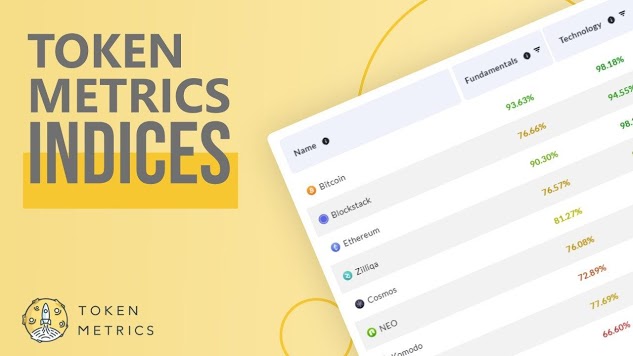
As Ethereum gas prices rise, the chain that inspired Web3 is becoming gentrified, with high transaction costs pushing less wealthy users onto competing blockchains or scaling solutions. This means that many use cases are becoming unfeasible in the proverbial layer-one downtown, and suburban neighborhoods are being developed to allow for a cost-effective layer-two blockchain experience.
Since getting acquainted with Polygon around the time of its launch in late 2019, Sameep Singhania has been an avid supporter of projects built on the protocol. In 2021, he created QuickSwap, a decentralized exchange (DEX) serving the needs of the budding Polygon ecosystem.
Singhania left a promising career as a software developer in 2017 to work as a freelance developer, only to find himself writing code for an array of blockchain projects in the DeFi and layer-two sector. Among the many projects he worked on, he spent 18 months with blockchain e-commerce site OpenBazaar, and served as lead developer for DeFi exchange ParaSwap.
Polygon is one layer-two solution built on Ethereum, and it offers users lower fees when transacting on-chain. QuickSwap is Polygon’s primary DEX and functions as a heart of the network.
A DEX for Polygon
After working on perhaps dozens of projects on Polygon from 2019 onward, Singhania “realized that to grow the Polygon ecosystem, we need a DEX.”
This was because while “99% of blockchain projects have a token,” listings on popular exchanges are not easy to arrange, and many users are not willing to create an account at an obscure exchange just to trade a particular token that is not listed elsewhere. A DEX can function as the central market square of a blockchain network, giving its users access to everything they need without having to venture to another chain.
Singhania recalls being encouraged to create a DEX by Polygon’s co-founder, Sandeep Nailwal, who put him in touch with Roc Zacharias, a marketer with Lunar Digital Assets. “That’s how we set up a team — we had developers, we had a marketing team, a perfect mix, and we launched the app,” he explains.
Polygon — previously called Matic Network, with MATIC remaining its ticker — is a layer-two blockchain. That means it’s a blockchain built on top of an existing chain. Whereas Lighting is an example of a layer-two, or L2, built on Bitcoin, Polygon is built upon Ethereum. As a result, Polygon-based tokens can be sent to Ethereum addresses, whose users can retrieve them simply by switching to the Polygon network on a DApp such as MetaMask.
The oft-stated advantage of L2 solutions is that they are more nimble than their behemoth parents, allowing for faster and cheaper transactions. With Bitcoin transactions costing over $10 and taking approximately 10 minutes for the first of six confirmations, it is clear that transacting on the parent chain is not practical for everyday transactions in El Salvador, for example, where laborers can earn as little as $100 per month. Instead, Salvadorans use Bitcoin Lighting, whose transactions cost as little as 1 satoshi.

The transaction costs on the Ethereum network are much higher, making it “unusable by the small users” who are effectively priced out of using DeFi solutions or decentralized exchanges like Uniswap. In January 2021, a “normal Ethereum transaction on Uniswap cost around $100,” Singhania recalls.
“If I’m a normal user and I want to do a small trade, I cannot do it on Ethereum — the average transaction size on Uniswap is somewhere around $50,000.”
“Polygon is there to scale Ethereum,” Singhania says, which has its pros and cons. He further explains that while “Ethereum is the most secure solution out there,” it comes at the cost of high gas fees and relatively slow transaction times.
That’s not exactly desirable for an economy — smaller denominations of currency exist because not everything can be done with $100 bills. L2s are the answer for allowing smaller transactions on existing networks like Bitcoin and Ethereum. On Polygon, users can exchange Ethereum-based tokens, NFTs, and interact with smart contracts cheaply.
📣LIVE NOW: @mcuban, @hackapreneur, @CryptoRocky, @AaveAave, & @0xPolygonspeak on Polygon Power Hour!
– @mcuban “People are probably a whole lot more active on Aave and QuickSwap on Polygon, than Ethereum L1 versions” – Mark Cubanhttps://t.co/99rGSoa04U pic.twitter.com/ySjxu049td
— QuickSwap (@QuickswapDEX) June 15, 2021
The pressing need for L2s is relatively new, because transaction costs have risen significantly in the past two years along with the blockchain user base. On QuickSwap, transactions between the over 23,000 available pairs cost only a few cents. “You can basically use QuickSwap to trade any ERC-20 token which has liquidity and exists on the Polygon network,” Singhania says. Fees are naturally paid in MATIC.
Considering the savings, switching digital assets from Ethereum to Polygon seems like an obvious solution for many users. However, some activities, like the trading of six-figure NFTs, remain decisively away from the Polygonian suburb. Similarly, Singhania acknowledges that those making million-dollar trades have less to gain from Polygon.
There are two primary ways to move assets to Polygon, according to Singhania: exchange withdrawals and bridges. “A lot of big exchanges like Binance support deposits and withdrawals on the Polygon network,” which means that the Ethereum network can potentially be avoided entirely. As for assets already on Ethereum instead of on a centralized exchange, they can be bridged, which is effectively an inter-blockchain transfer.
“Both L1 and L2 applications have their own pros and cons and they both have their use cases — now it’s up to the user to choose which platform better suits their needs”
Learning the ropes
Singhania, 31, grew up in India’s capital, New Delhi. He had an early passion for coding since high school, describing the process of coding “like magic happening,” whereby “wonderful stuff” could be created with just a few lines of code. He followed his passion in 2008 to JSS Academy of Technical Education, on the outskirts of the capital, where he completed a bachelor in computer science and served as a campus IBM Ambassador.
Graduating in 2013, he began his career in software testing and automation at Dell, but soon realized that he wanted to “focus more on development” instead of remaining a software tester, a role with less opportunities for creative input, for the remainder of his career. He made the switch to software developer in 2015 at Drishti-soft Solutions, where he worked on customer service software and organized web development training sessions.
Still not quite settled in the role and in search of “something where I don’t get bored,” Singhania switched over to software freelancing in 2017. “When you do freelancing, you get to know a lot of people and learn about a lot of new industries and domains,” he recalls, noting that he was finally interested in his work. One of these new industries was blockchain, which he had previously heard about while working as a developer.
“I again came across this blockchain and Bitcoin stuff while searching for a project, so I decided to give it some more time and do some more research — to figure out ‘what is this Bitcoin? What is this blockchain?’”
By mid-2018, Singhania was a full-time blockchain engineer for a number of projects, including Akila Labs, Bitgrit, and Toptal, where he developed ERC-20 tokens and smart contracts for things like airdrops, token vesting and crowdsales. Notable among this was 18 months spent working with the decentralized marketplace startup OpenBazaar, “which was trying to build something very similar to Amazon — but on blockchain” using the peer-to-peer InterPlanetary File System (IPFS), Singhania recalls with excitement.
Compounding knowledge
“When DeFi was just starting” in 2018, Singhania worked as the lead developer and first employee of ParaSwap, an aggregator DApp which brings together multiple DEXs so that users can seamlessly trade cryptocurrency pairs which do not exist together on any exchange. All of this trading is done through Singhania’s smart contracts, which “handle millions of dollars everyday,” he says proudly, adding that the platform saw 3.3 billion dollars in volume in the past month.
“That project allowed me to make an entry into DeFi — it basically introduced me to everything out there like Uniswap, Bancor, Kyber Network, because to build ParaSwap we needed to learn everything about DeFi.”
With DeFi under his belt, Singhania encountered layer-two blockchain solutions while working on a dice game for one of his clients, a blockchain casino.
He soon realized that “it was too expensive to do it on Ethereum” — even though 2019 gas fees were a fraction of what they are today. Something new was needed, and Singhania “started exploring for layer-two solutions,” he recounts. He first built his dice game on the now defunct layer-one Loom Network which shut down shortly thereafter, Singhania scouted out Matic Network, which was in late 2019 “very new and their mainnet was not launched.” Working with the Matic Network team, now called Polygon, Singhania got the dice game up and running, becoming acquainted with the Polygon network in the process.
Ethereum dice games are not the first to suffer from scaling issues. Erik Voorhees’ SatoshiDICE, for example, was launched in 2012 and soon accounted for over half of Bitcoin transactions. With transaction prices increasing, making small on-chain bets on Bitcoin’s main layer has since become impractical.
.@QuickswapDEX has shown tremendous growth on Polygon PoS & has become the biggest Polygon-native decentralized application in terms of users, TVL, & volume.
We’re offering them $1m in liquidity mining incentives to strengthen the platform’s liquidity
🌐:https://t.co/Z3fb8BOCmw pic.twitter.com/gHN9ZL89U6
— Polygon | $MATIC 💜 (@0xPolygon) September 30, 2021
Onboarding the next generation
Now that Polygon is a low-cost option to L1 and has a reliable DEX, Singhania believes that the next step in scaling the layer is to improve the user experience in order to make it user-friendly for millions of people who are new to cryptocurrency. As QuickSwap is a central point of the Polygon ecosystem, much of the responsibility falls to his shoulders.
“The way that things are designed right now, it’s not for a novice — it’s for a well-trained crypto user.”
In Singhania’s view, the price of MATIC can be expected to follow the adoption of the Polygon layer. If the team continues to execute, “it is just a matter of time” as to when prices might begin a steady climb. One thing is clear: Singhania is no longer bored with his work and is “not doing any kind of freelancing because I don’t have time.”




Be the first to comment